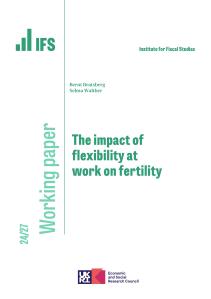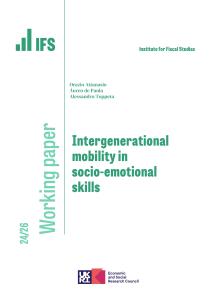<p><p><p><p>We describe the trajectory of pension reform in the United Kingdom, which has focussed on keeping the cost of public pension programmes down during a period of steady population ageing whilst attempting to maintain an adequate minimum level of income security for low income households in retirement. Instruments for achieving these aims have been to target public benefits on low income households, permitting individuals to opt out of the second tier of the public programme into private retirement accounts, and the use of tax incentives to encourage additional private retirement saving. Frequent reforms to the pension programme raise the question of whether households can make reasonable private retirement saving provision in the light of growing complexity and potential shortcomings in individual decision-making. This paper sheds some light on these issues.</p></p></p></p>
Authors

Deputy Director
Carl, a Deputy Director, is an editor of the IFS Green Budget, is expert on the UK pension system and sits on the Social Security Advisory Committee.

Research Associate University of Bologna
Matthew is Associate Professor at the University of Bologna focusing on consumption and savings choices and how policy affects them.

Research Associate University of Sussex
Richard is an IFS Research Associate, a Part-time Professor of Economics at the University of Sussex and a Visiting Professor of Economics at UCL.
Report details
- Publisher
- McMaster University
Suggested citation
R, Disney and C, Emmerson and M, Wakefield. (2007). Pension provision and retirement saving: lessons from the United Kingdom. Ontario, Canada: McMaster University. Available at: https://ifs.org.uk/publications/pension-provision-and-retirement-saving-lessons-united-kingdom (accessed: 2 July 2024).
Related documents
More from IFS
Understand this issue

Where next for the state pension?
13 December 2023

Social mobility and wealth
12 December 2023

Autumn Statement 2023: IFS analysis
23 November 2023
Policy analysis

How would the parties’ tax and spending plans affect Scotland and Wales?
28 June 2024

General Election 2024: Manifesto Analysis Presentations
24 June 2024

How do the last five years measure up on levelling up?
19 June 2024
Academic research

The impact of labour demand shocks when occupational labour supplies are heterogeneous
28 June 2024

The impact of flexibility at work on fertility
11 June 2024

Intergenerational mobility in socio-emotional skills
5 June 2024